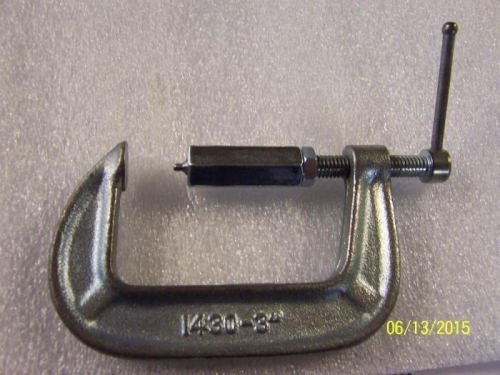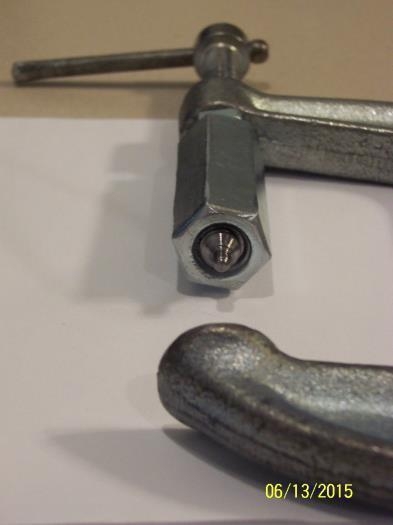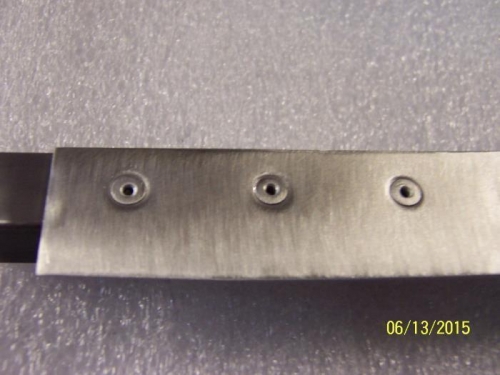
|

|
|

|
Johns Web Site

|
Date: 6-13-2015
|
Number of Hours: 0.00
|
Manual Reference:
|
Brief Description: Fuselage Dimpling Tool
|

|
As I mentioned in my June 11 post, I was not happy with my initial attempts with dimpling the square forward fuselage tubes because the dimpled skin did not fully seat into the square tube dimple around the rivet causing pillowing between the rivets. The problem seems to be that when the dimpling die is pressed into the tube until it bottoms on the flat surface of the male die, there is enough spring back in the steel to leave the dimple too shallow.
I asked other builders on the SPA forum what tools and process they were using to form these dimples. One of the respondents, Corry Dingfelder, mentioned using a modified pin punch and a C-clamp to form the dimples. This was the germ for my idea to modify a C-clamp to provide a controlled process.
I took one of my standard steel 3-inch C-clamps and removed the swivel from the end of the clamp screw with a cut-off disc in a Dremel tool. The clamp screw was removed from the clamp frame, and the handle was removed from the clamp screw. A 3/8-16 coupling nut and jam nut (ACE Hardware) were threaded onto the clamp screw and tightened together, then this assembly was chucked up in my lathe. The coupling nut provides a good clamping surface for the lathe chuck, prevents damage to the threads, and keeps everything on center.
A short 1/8” diameter pilot was turned on the end of the clamp screw and this transitions into a 90-degree cone. A few of the clamp screw threads were removed adjacent to the cone, just to clean things up. The pilot and cone area were polished with a scotch pad while spinning in the lathe.
After removing the clamp screw from the lathe, the coupling and jam nuts were removed, and the screw threaded into the clamp frame. The jam nut and coupling nut were threaded on to the screw with about ¼” of the clamp screw exposed beyond the coupling nut. This is more exposure of the working end than needed, but a few sample dimples in a sample steel tube are needed before setting the coupling nut.
To determine the correct dimpling depth
|

|

C-Clamp Modified for Dimpling Square Tube
|

|

|

|

The Results
|

|
|

|

|

|
|

|

|
Copyright © 2001-2024 Matronics. All Rights Reserved.
|

